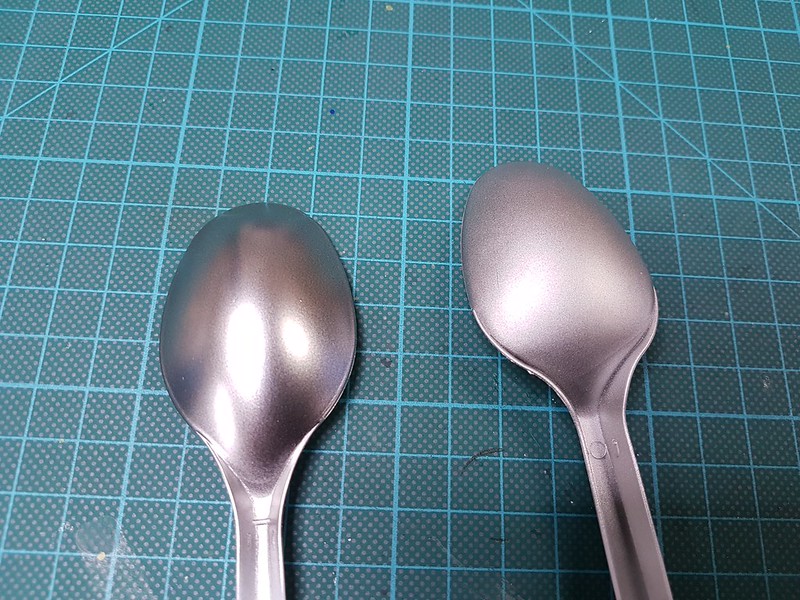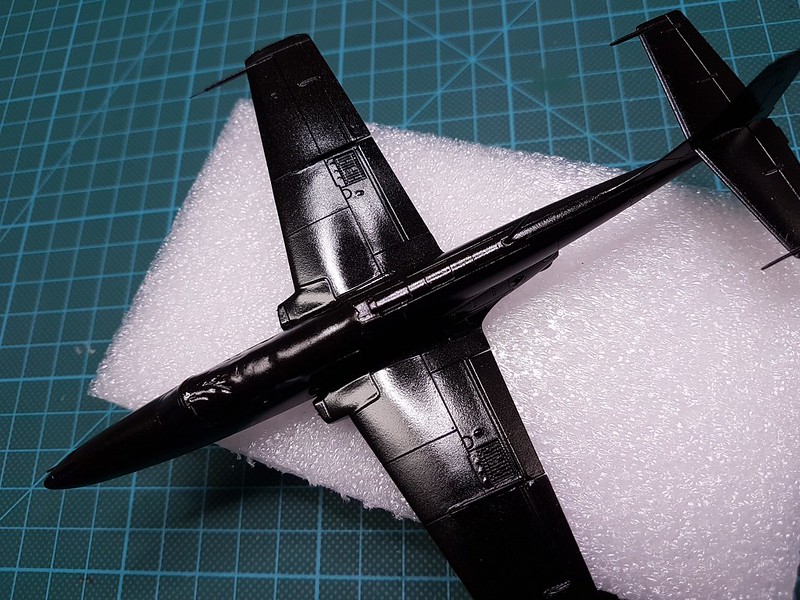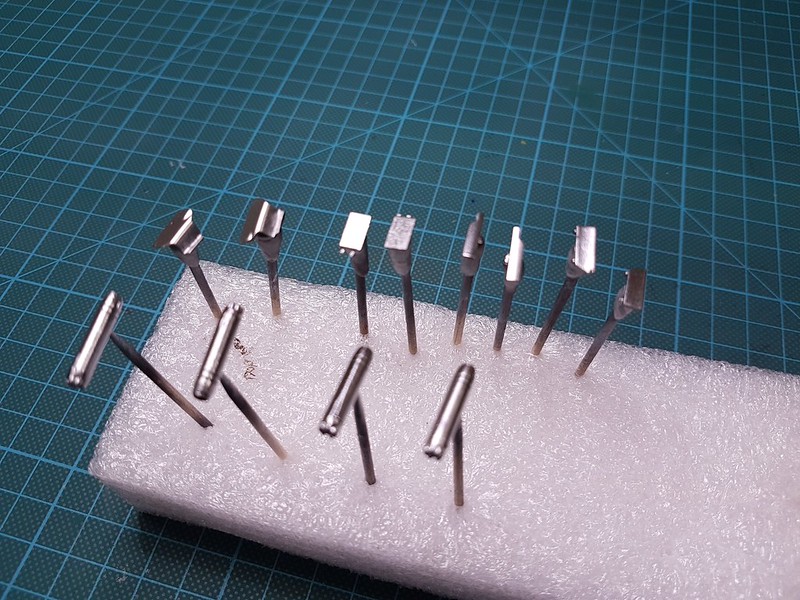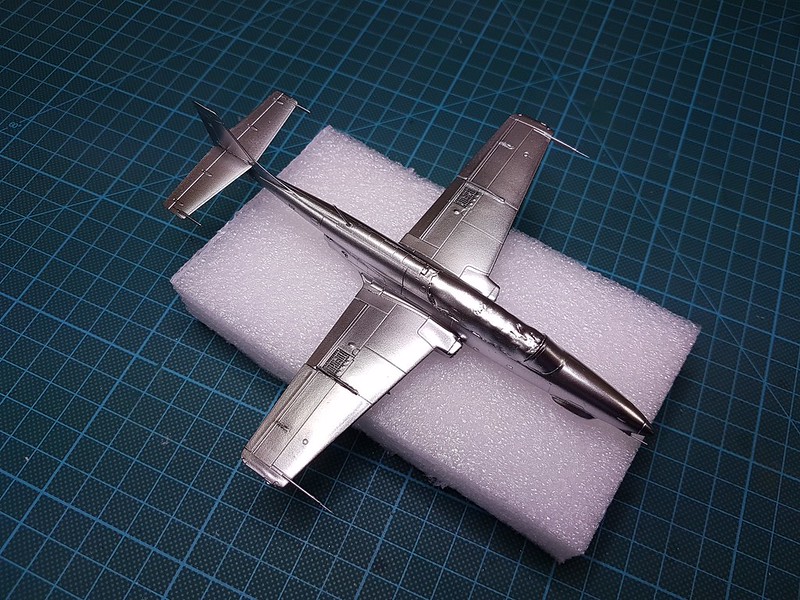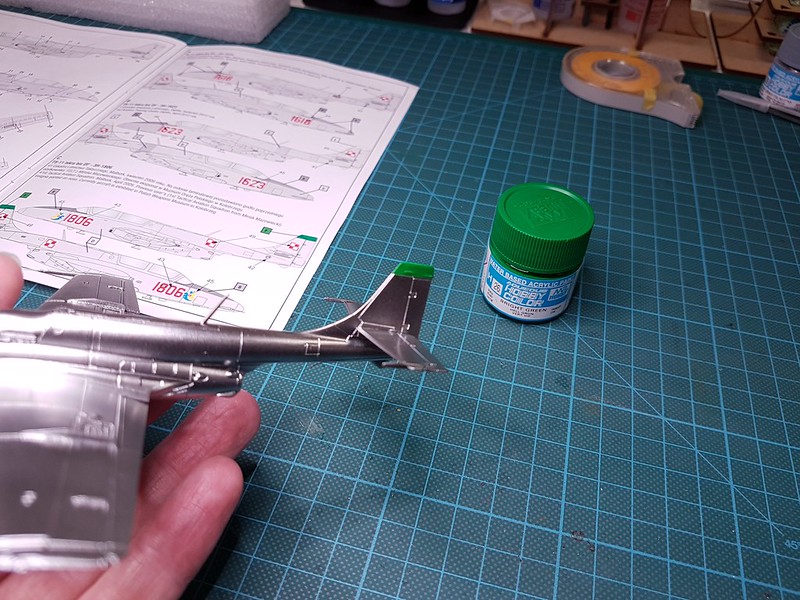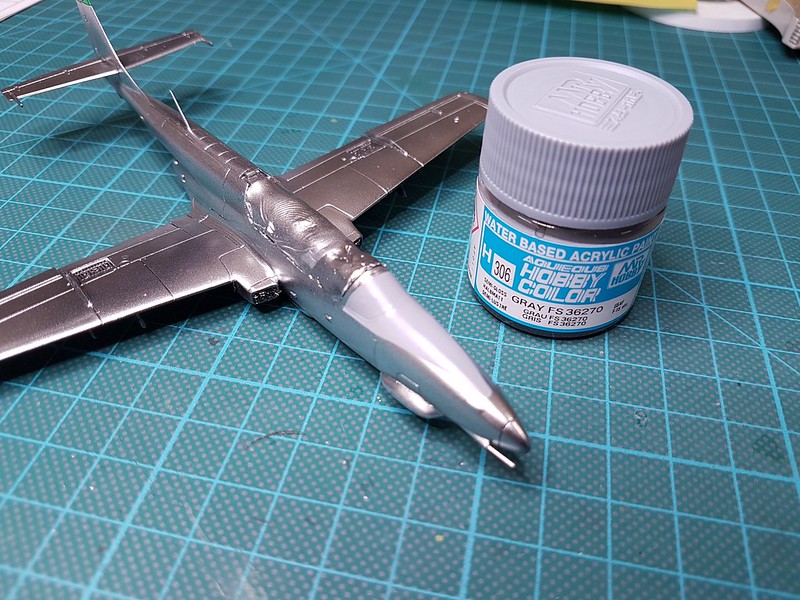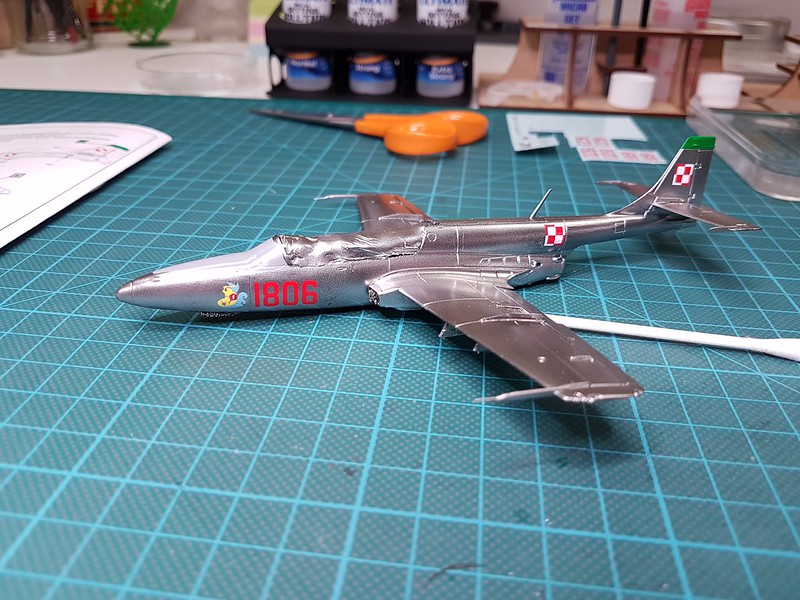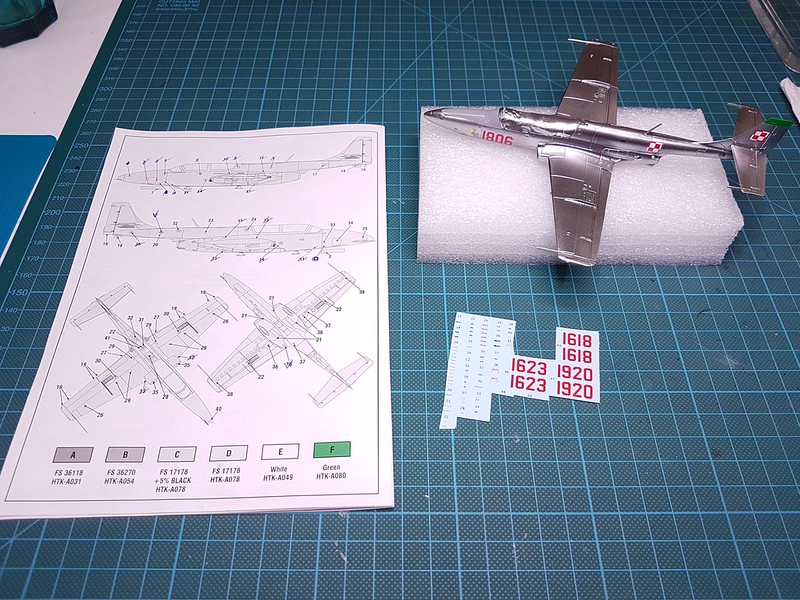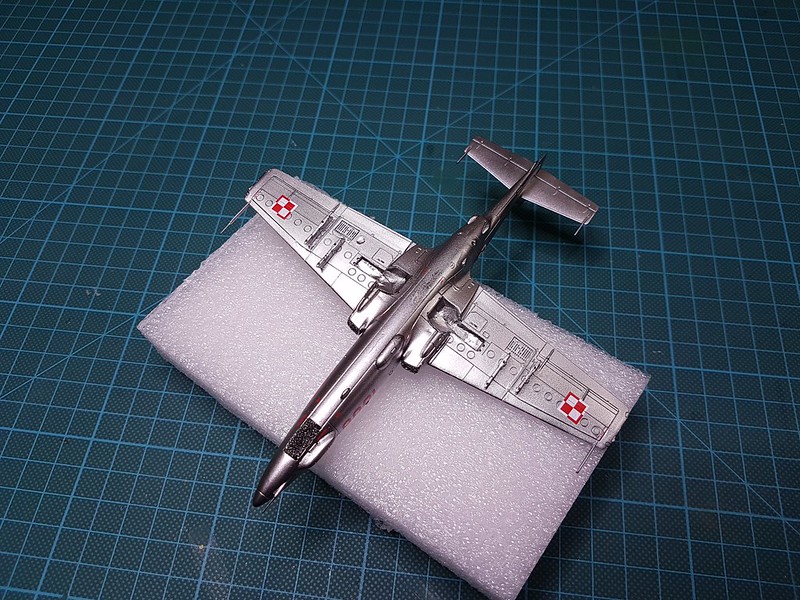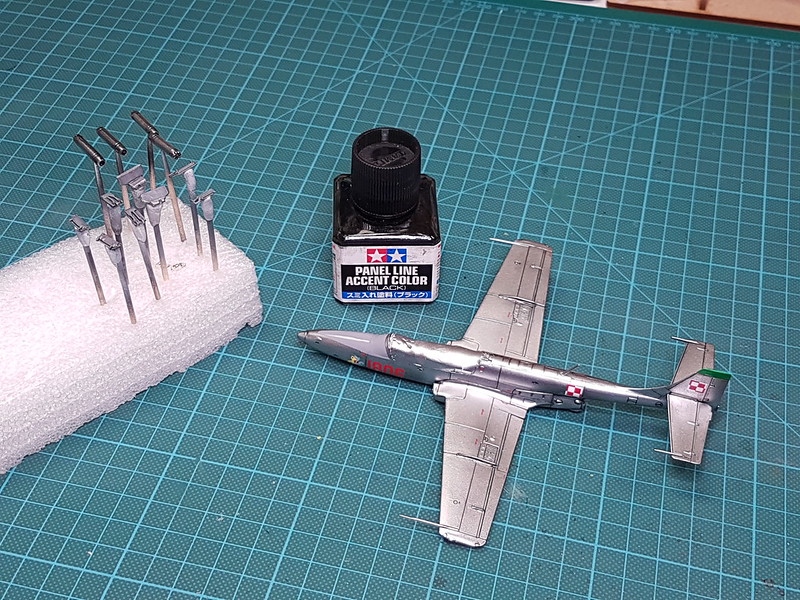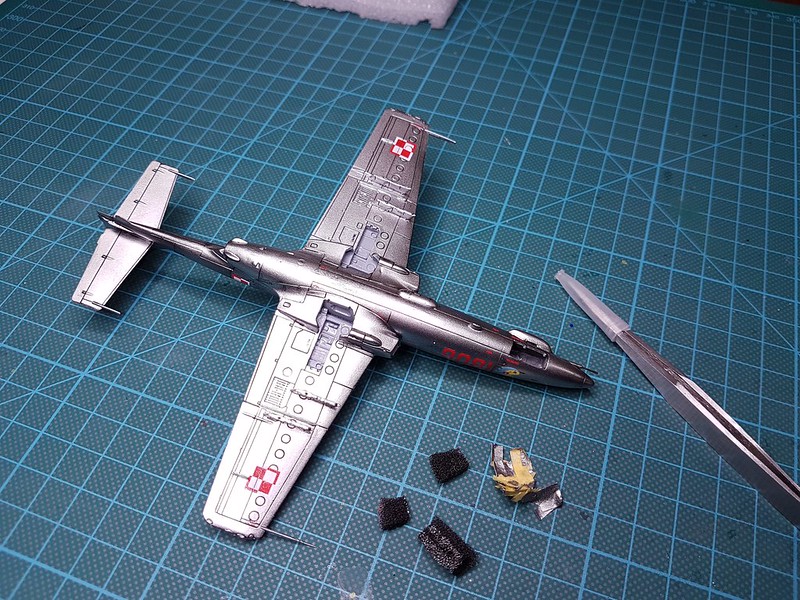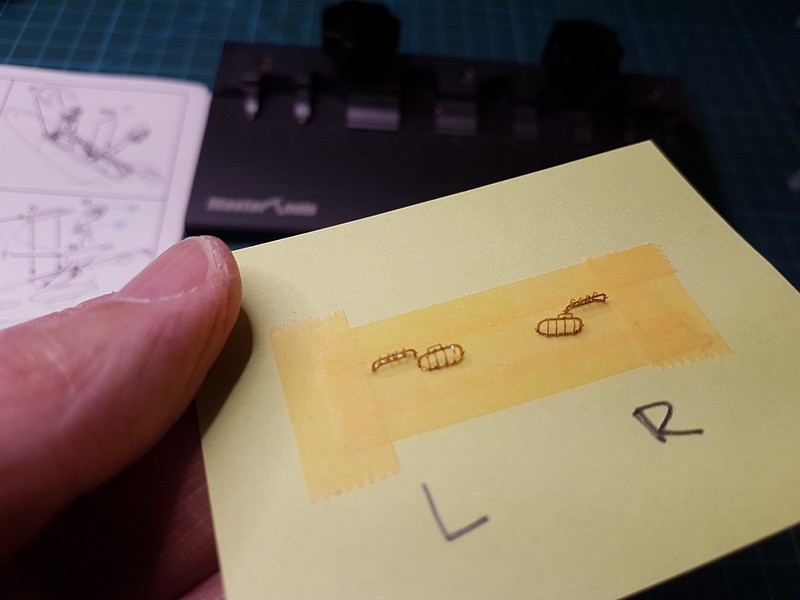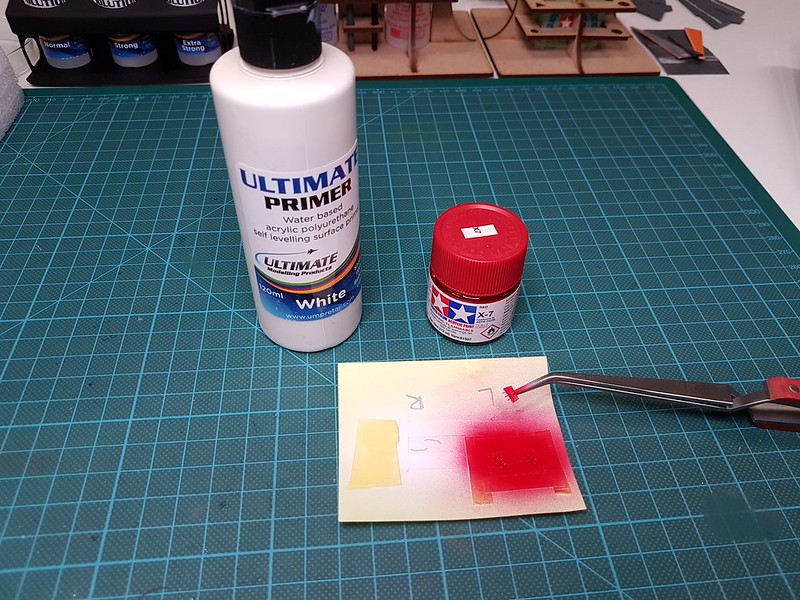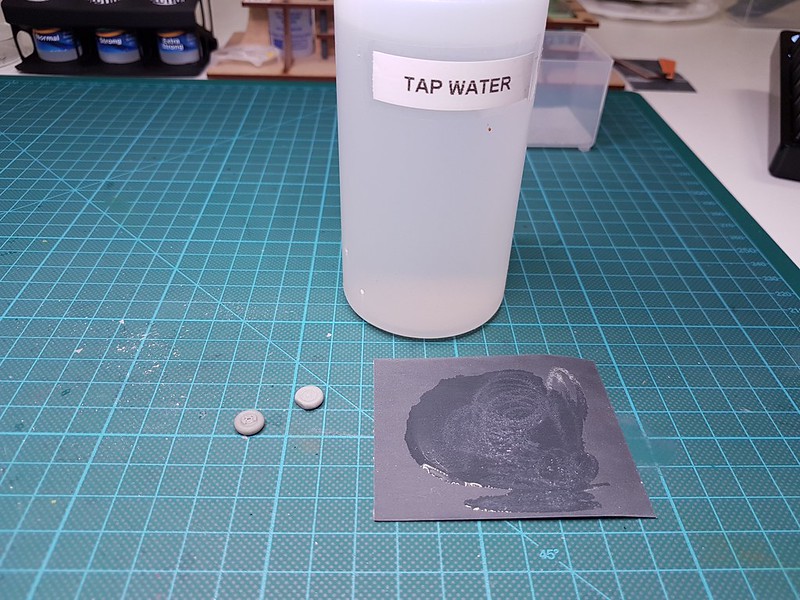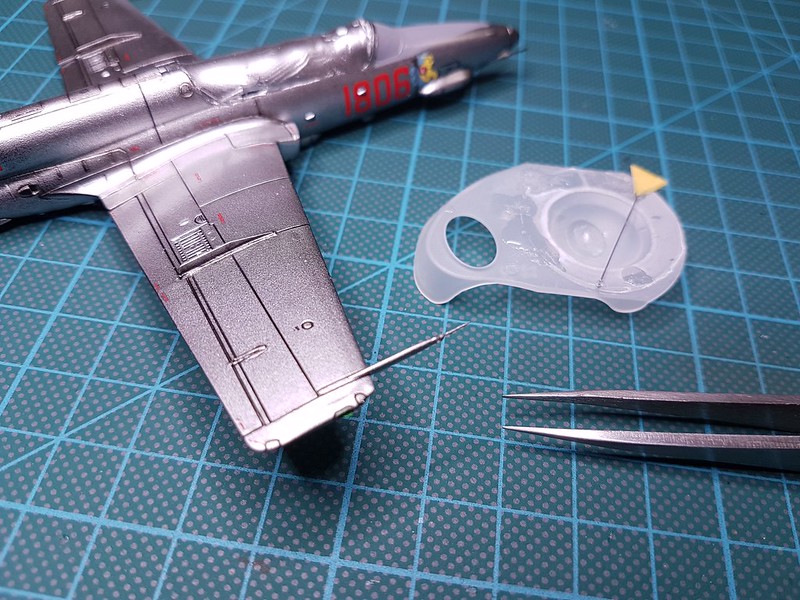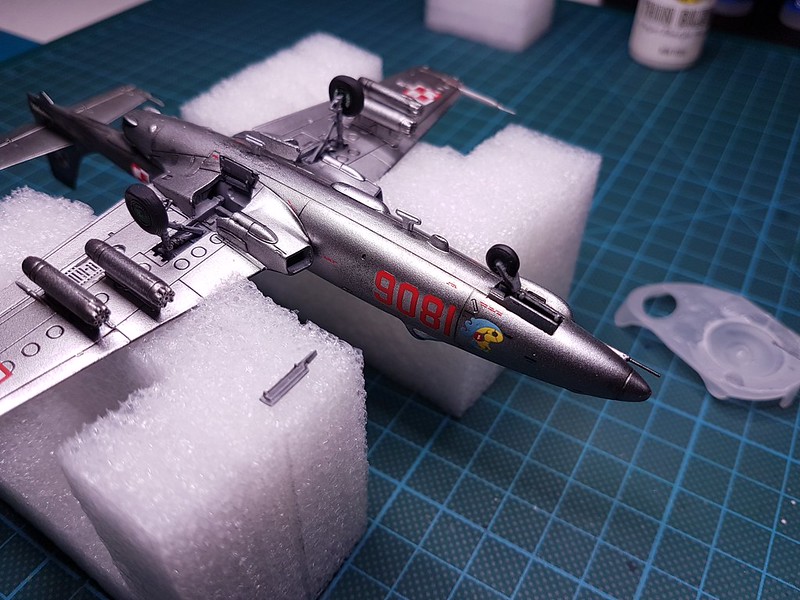Here's my entry for this GB; The Polish Trainer and Light Attack aircraft PZL TS-11 Iskra.

The PZL TS-11 Iskra (English: Spark) is a Polish jet trainer, developed and manufactured by aircraft company PZL-Mielec. It has been used by the air forces of Poland and India. It is notable as being the first domestically-developed jet aircraft to be produced by Poland, its service for over 50 years as the principal training aircraft of the Polish Air Force, and as the oldest jet-propelled aircraft still in service in Poland.
As a part of efforts to preserve Poland's ability to independently develop aircraft in an era of political and economic subservience to the neighbouring Soviet Union, during the 1950s, Polish engineers at the Poland's Aviation Institute (IL) commenced early work upon the design of what would become the first jet aircraft to be developed in Poland. Following the death of Joseph Stalin, work on the initiative could be performed more openly and government officials became supportive of such a venture. The fledgling design was heavily influence by the requirements specified by the Polish Air Force, who had formalised a requirement for a jet-propelled aircraft for training purposes. On 5 February 1960, the first prototype conducted its maiden flight, powered by an imported British Armstrong Siddeley Viper turbojet engine.
During 1963, deliveries of the first production model of the type, designated as the TS-11 Iskra bis A, commenced to the Polish Air Force. During the 1960s, the Iskra competed to be selected as the standard jet trainer throughout the Warsaw Pact. However, it was not selected to fulfil this significant role, the rival Czechoslovakian Aero L-29 Delfín having been chosen instead, which went on to be built in greater numbers for a wide number of export customers. Production of the TS-11 came to an end during 1987, however the type remained in service with the Polish Air Force and the Indian Air Force into the 21st century. From 1969 onwards, a handful of TS-11s have been used by the Polish Air Force's Biało-Czerwone Iskry aerobatics display team. It has also been used for aerial reconnaissance purposes. During the aircraft's later years of service, several examples have been sold onto private owners.
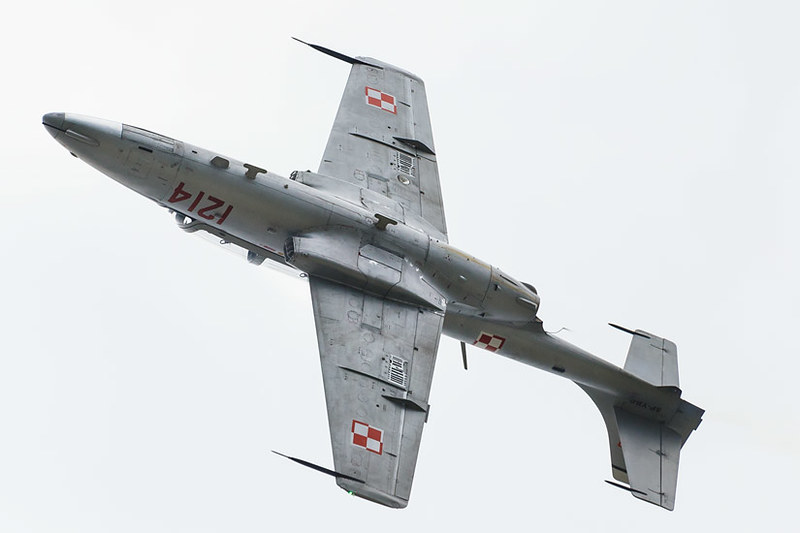
General characteristics
Crew: Two – student and instructor
Length: 11.15 m (36 ft 7 in)
Wingspan: 10.06 m (33 ft 0 in)
Height: 3.50 m (11 ft 5½ in)
Wing area: 17.5 m² (188 ft²)
Empty weight: 2,560 kg (5,644 lb)
Loaded weight: 3,734 kg[20] (8,215 lb)
Max. takeoff weight: 3,840 kg (8,470 lb)
Powerplant: 1 × WSK SO-3 turbojet, 9.81 kN (2,205 lbf)
Performance
Never exceed speed: 750 km/h (Mach 0.8, 404 knots, 466 mph)
Maximum speed: 720 km/h (388 knots, 447 mph) at 5,000 m (16,400 ft)
Cruise speed: 600 km/h (324 knots, 373 mph)
Stall speed: 140 km/h (92 knots, 106 mph) (power off, flaps down)
Range: 1,250 km (673 nmi, 776 mi)
Service ceiling: 11,000 m (36,000 ft)
Rate of climb: 14.8 m/s (2,913 ft/min)
Wing loading: 213 kg/m² (43.6 lb/ft²)
Thrust/weight: 0.30
Armament
1x 23 mm NS-23 or NR-23 cannon in the nose
4 underwing pylons, up to 400 kg (880 lb) of bombs or unguided S-5 rocket pods Mars-4 (8 rockets) or Zeus-1 (12,7mm) gun packs.
The kit I'm gonna build is the "Expert set" (whatever that means..) of the ARMA Hobby 1/72 TS-11 bis DF.


And I have added some aftermarket parts to spice it up a little bit

I will start building this tonight, so stay tuned for more updates soon
Tommy













































































































































































